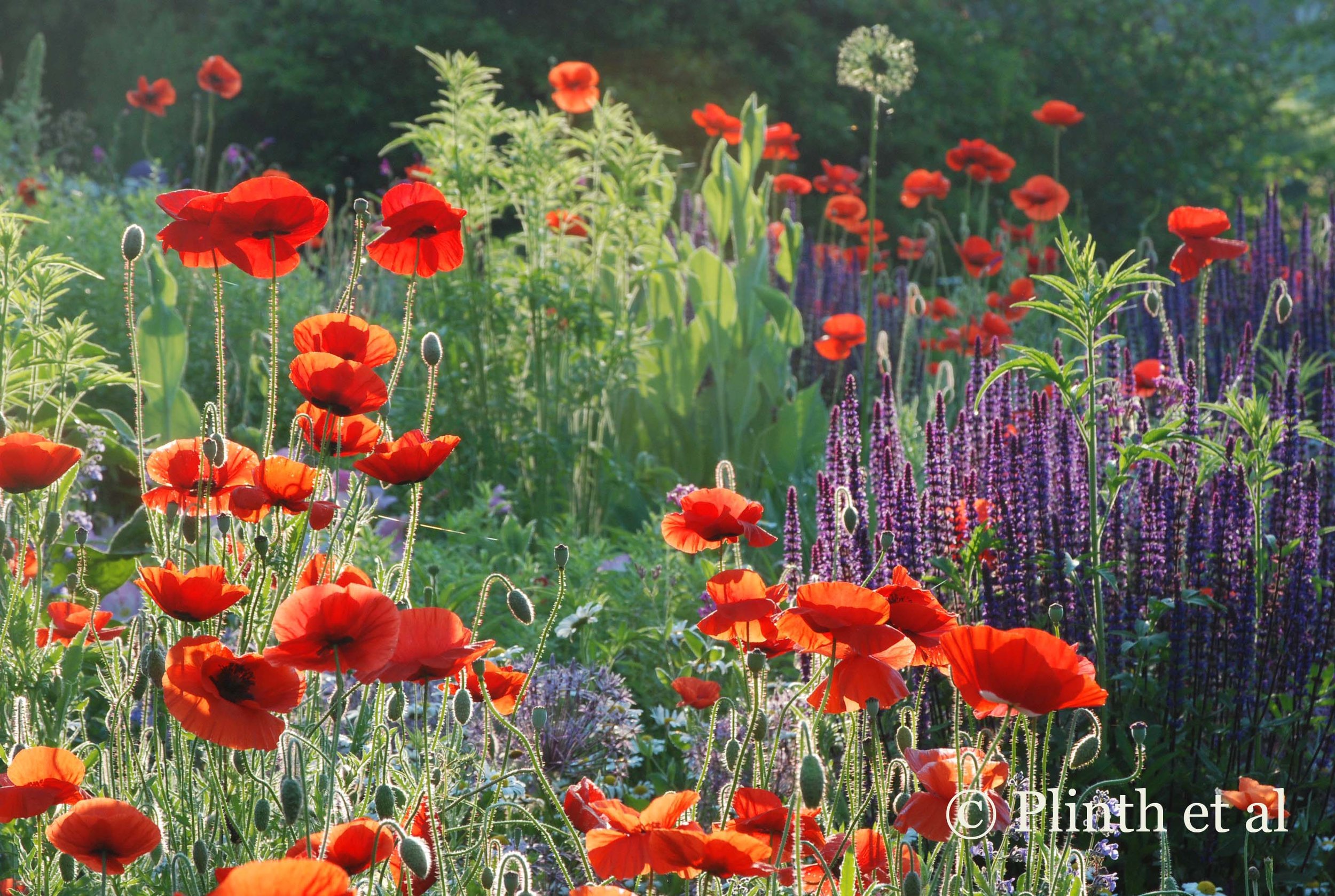Dear Jimmy,
Late May to early June is usually a jubilant time for me - the late spring growth has rapidly matured, the evenings stretch longer, and the vitality of foliage, still pristine and relatively unmarred, awakens the eyes jaded from winter. It is too the time of poppies -even the name 'Poppy' itself has a playful, pop-up art connotation, a concept that doesn't take itself too seriously. And the color synonymous with poppies, a bright red unadulterated by blues or yellows, jolts the senses in its unabashed brilliance.

In the chalk fields of the Norfolk Broad a few years ago, I witnessed hundreds of Flanders poppies (Papaver rhoeas), dabbed like the red spots of a pointillist painting. At Chanticleer, parts of the Pond and Gravel Gardens become a sea of red, as long as winter has been merciful enough to let any seed or seedlings survive (this past winter was a brutal one, reducing the sea to more of a trickle). The poppy seems a symbol of beauty at its fullest and most fragile - a rainstorm easily send the curtain down on the flowers - that belittles its resilient profundity. Each flower dwindles to a capsule that expels hundreds of black seeds, a fraction of which secures the plant's future. I'm often taken by surprise at the number of seedlings appearing in the garden the following spring. A seedling then quickly mushrooms into a fat clump transmogrifying into an airy framework of wiry stems and flowers with heat. After a few weeks, the entire plant becomes a desiccated skeleton having fulfilled its purpose. We pull it out, scattering its seeds wide in hopes of seeing more next year.

The Flanders or corn poppy has become a floral remembrance of WWI and WII battlefields - it has been said that poppies emerge thicker where bloodshed was the heaviest. Farmers regard them as agricultural weeds, although modern farming practices have more or less obliterated them. These poppies are 'relics' of a cultural landscape in which organisms had evolved in sync with traditional principles of animal husbandry, delayed tilling, and hedgerows.
Horticulturists took among themselves to select and breed for paler colors, which collectively became known as Shirley poppies. Shirley poppies will often revert to the standard red species if not carefully edited for rogue seedlings and separated physically. Their flowers have a silvery shimmer, a pearlescent quality made surreal during cloudy days.
The Oriental poppy (Papaver orientale) seems to be a hypersexualized version of the Flanders poppies - its petals have become larger, fuller, and deeply crinkled like the finest chine crepe, its stamens and anthers sultrier like mascara-lined eyes, and its colors 'less' pure in red, washing into pinks and creams. Even its basal rosettes are bullies, making the Oriental poppy less of a partner to tango with than the Flanders poppies, which pirouette gracefully and spontaneously amidst other plants. In large gardens they look stunning with bearded irises, peonies, and other traditional cottage garden perennials.

Ever since the Wicked Witch of the West sent Dorothy and her entourage into a soporific slumber with a field of poppies, the opium poppy has had a less salubrious reputation as a source of narcotics, including its derived product heroin. It irreversibly altered history when China was forced to concede Hong Kong to Great Britain in the aftermath of the Opium Wars. With darkness comes benevolence - the poppy seeds beloved in breads and cakes and poppyseed oil are from the opium poppy.

My heart belongs to the ladybird poppy (Papaver commutatum), which possesses the same saturated red of the Flanders poppy, but stamped with the trademark black splotches.Without these black splotches, the flowers look rather ordinary and merely attractive. At Great Dixter this poppy flowers with the magenta Gladiolus communis ssp. byzantinus at Great Dixter - it is a daring combination the late Christopher Lloyd loved in its irreverent cheekiness. Unfortunately the ladybird poppy is not a reliable self-seeder. The best way to hedge against no-shows next year is to start them from seed under cover, prick the seedlings individually into plugs, and plant as soon as possible when the roots have filled out. Autumn sowing is best as it goes for annual poppies. As you know, the effort is always worthwhile and I often dream of combinations with the ladybird poppy - the bright blues of Centaurea cyanus 'Blue Ball', the whites of Orlaya grandiflora, or orange geums. A field of them would be magical, evoking what John Keats wrote in Endymion: "Through the dancing poppies stole A breeze most softly lulling to my soul."
~Eric











